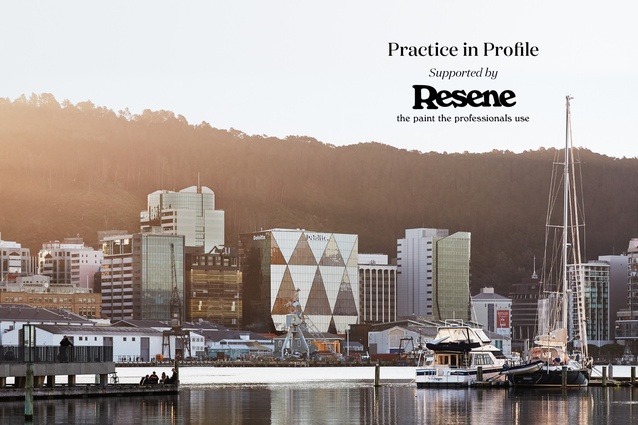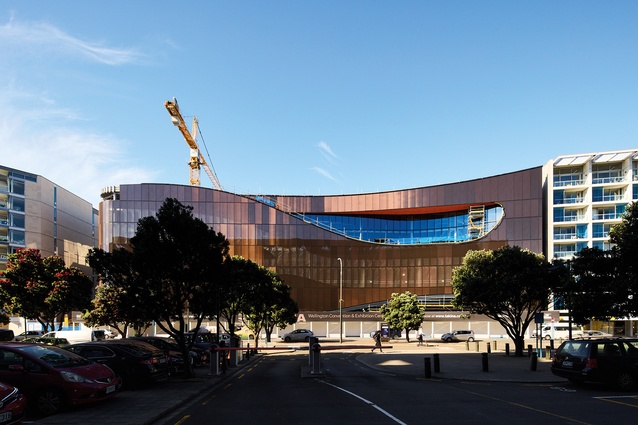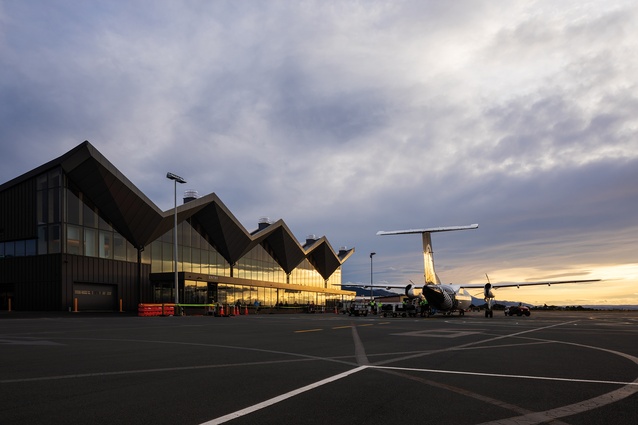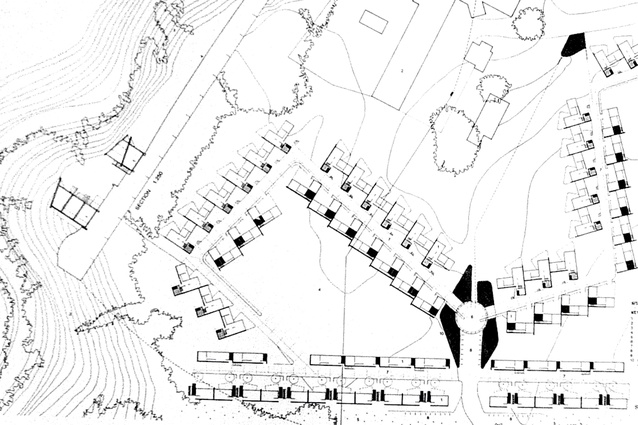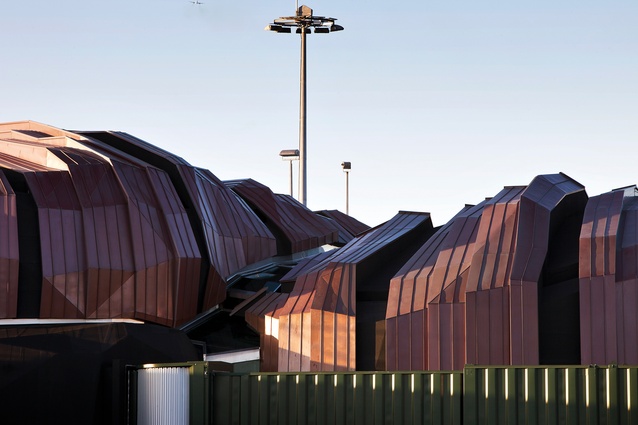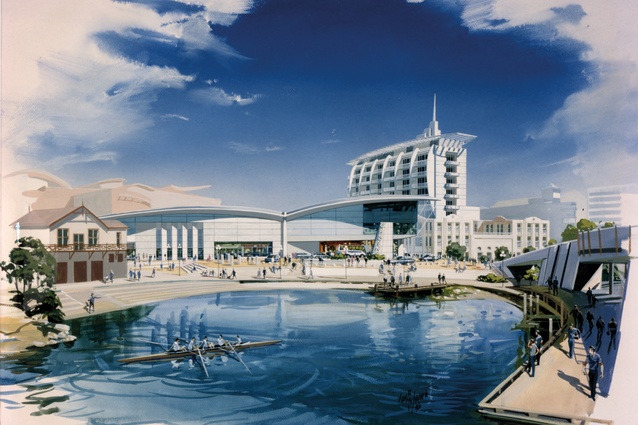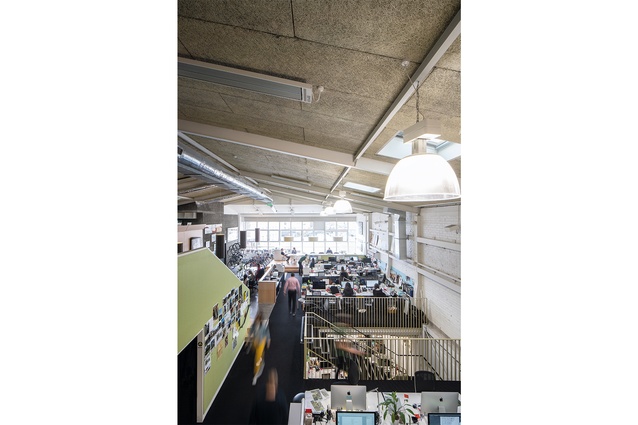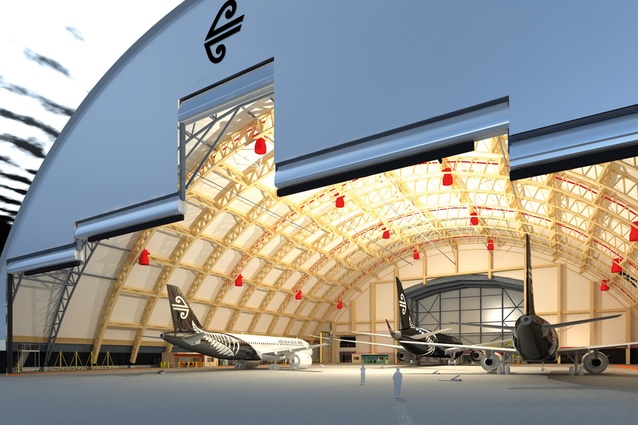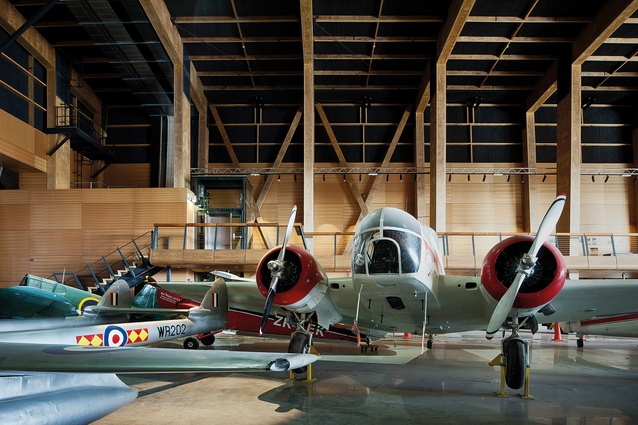Shaping our collective Pacific future
As Studio Pacific Architecture celebrates three decades in business, one of its founders – Evžen Novák – reflects on how the studio has become a cooperative enterprise in which multiple design approaches have flourished.
Trying to describe 30 years of Studio Pacific Architecture with, say, two sentences per year is rather like describing a large cloth by talking about a couple of its strands. It is with some of the same naïveté, hope and ambition with which we started off the practice that this partial view of Studio Pacific’s history is put together. There have been amazing times and fortunate opportunities; without glossing over a few struggles in between, I (and we) can see now that we have achieved more than we ever dared hope we would at the beginning of the practice.
To me, the point was to use our collective creativity to make Aotearoa New Zealand a better place or, at least, the pockets of place we could influence. Two central queries always seem to come about when talking about practice history: how did we get from 1992 to here, in the practical sense of running an office, and what has imbued our design work with its character in that time?
In answering, it is difficult to speak on behalf of everyone involved in the enterprise – there are so many people to whom we should be thankful, not least some very able and understanding clients and some very long-standing and dedicated staff. And I hesitate to use “we” to talk about what has been achieved, as it’s only one point of view and there are others with much to say that will be left unsaid here. So, this is a personal view, not the comprehensive history of record which remains to be written.
Our bare origin story is that the three originals, Nick Barratt-Boyes, Stephen McDougall and I, put together the idea of Studio Pacific in various haunts in London. We scribbled up sheets of paper to determine the name and thought about what we might like to do and how we might go about it, although actual projects were in very short supply at the time. We made a commitment to one studio and to Wellington that has endured for nearly 30 years. Our very first projects were, nevertheless, in distant places, ranging from Queenstown to Kerikeri and, now, there is a team based in Auckland.
The name, in London anyway, conjured up a Pacific that stretched from Singapore around to Santiago de Chile, with a great deal of the northern and southern hemispheres included. Once we had arrived home in Aotearoa, it became clear that the Pacific had some much closer boundaries in most people’s minds.
While we are not the fullest of regionalists to which the name may allude, it is difficult to imagine some of our work being built anywhere but here. Tākina – the Wellington Convention and Exhibition Centre – or Nelson Airport, for instance, are wedded to their respective places. Site specifics have informed the organisational structure of each of those buildings but the question of why a building or a space takes its form and shape is more readily answered by the wider place in which it sits. Over the years, this has grown into the idea that we, as a practice, are shaping our collective Pacific future.
The word ‘studio’ is a little easier to define although, 30 years ago, it always seemed only artists had studios; architects had offices. Now we have a studio, as do quite a few architects, even though the word’s usual definition doesn’t encompass architecture. Ours does have a hierarchy but it isn’t exactly one polity. It doesn’t mind that there are diverse design approaches and that the clever idea comes from anywhere and not necessarily from those at the top of the pyramid. It’s also why, other than the fact that it would have been a terrible mouthful of words, we avoided the use of our individual names in the practice name.
The idea of studio is also important because it suggests an investigation prior to the delivery of the work. This is not a disguised design by committee but a series of investigations into context and into alternatives that will lead to a singular idea capable of gaining the backing of all, and especially our clients, some amazing people, whose needs and ideas we, of course, reflect. The work, almost all having some commonality in process, then exhibits a diversity of ideas, not a singular stylistic manifesto.

The practice has grown from three to roughly 93 in the 30 years, not only changing what we could possibly do but also how we go about doing the work. It has needed, as all architects will know, bucketloads of patience, while projects gestate and mutate to accommodate the discoveries made along the way – our longest-lasting job survived from 2008 until practical completion in 2022. It also entails a fair bit of sacrifice – drawing, for instance, isn’t the fastest of activities – and, in the time-consuming art of doing the best possible work, there are a few sacrifices made to other parts of our lives.
Practice structure is also intrinsic to output. We have had, in the past – as described by one of our staff, “a three dads” version of how leading the charge works. While three dads have rallied around one flag, over the years, the studio has become a cooperative enterprise in which multiple design approaches have flourished and different project areas have been taken up. There’s quite a bit of overlap and, as you would also expect, each of the dads has had a slightly different view of what to do next.
That means that the empty sheet of paper – the start of architecture and the joy and heartache of its creation – and the seemingly random ideas that arise don’t all follow one pattern but, when you look back, they don’t seem quite so random either.
The effect of experience is manifest; where once it seemed hard to arrive at a design position, now it’s hard to choose between all the design positions that arrive. There is a constant delving into the recesses of the mind, into history, into what has been done before, into the site itself, into geometry and form, and into the natural world around us, where there is the most abundant source of rhythms, patterns, light and spatial characteristics. The work results from this search.
Conveniently, we can divide Studio Pacific’s work and existence into roughly three eras, each of about a decade. During the first decade, there was most certainly a struggle to find projects, gain recognition and overcome the bias toward those that have done any particular building type before. In the second decade, the seeds of the studio’s interests were nourished and had some serious outings. In the third, work has blossomed in a multitude of directions and we have embraced new areas, such as landscape architecture and heritage work.
The three of us wrote out a set of objectives for the practice in 1992. An office of 20–30 within a decade seemed a big stretch in amongst a slow economy, a couple of design competition wins and a few kitchen alterations. It did come to pass along with all the others (although we didn’t look at them at all for years at a time) with one exception: an office in Praha/Prague, which I had sneaked into the list as it was three years after the Velvet Revolution and it seemed as though that would be a future growth area once rampant capitalism had set in. Knowing what I know now about the practice of architecture and about Czechia, pursuing that idea would have been a nightmare of dissipated energy and, fortunately, has never happened.
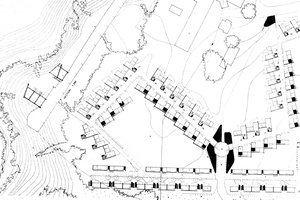
Our early reliance on competitions included a win in the Carrington Polytechnic Student Housing Design Competition: both parts of the competition, for a master plan and for the housing itself. The design had a very clear organisational structure, one that lent credence to the poetic label of ‘The Eagle and the Spine.’ This use of metaphor differentiated the response but also reflected the actuality of the proposed design.
Winning was a source of more than pride but it turned out that there was no serious commitment to proceed and, like many design competitions in New Zealand, it all fizzled out – another contribution to the suspicion that design competitions are a great way to test the waters for a very small outlay. Still, it was a fortunate win for us, as the prize money contributed in our first year to overall practice earnings of $33,000, to be split three ways.
There were other competitions, including, some years later, the rather more controversial $100-million casino for Wellington’s waterfront. The buildings, as designed, were beautiful, including a free-form wing on the water’s edge, but the commissioners deciding on the resource consent had the view that a casino could not be defined as a place of entertainment, and, for this and other reasons, declined consent. The project, fortuitously, in hindsight, stayed in the plan drawers.
We were interviewed, at the time, by Wellington’s The Evening Post and were described by the paper as a “smooth team… anxious their monumental achievements do not eclipse their more suburban ones”. The monumental epithet is somewhat overblown, and the suburban achievements referred to the fact we have always had new houses and house alterations amongst our project work. They have consistently been important but not quite the design nexus they seem to be in other practices.
By the second decade, several practice specialities had started to arise. These are threads that have multiplied over the years into a substantial tapestry of work that has not only sustained the practice but also underpinned a breadth of work across a large variety of project types we have been able to tackle.
There is a cross-disciplinary approach to practice embracing urban design, infrastructure and landscape. There are also specialist areas, such as heritage and workplace design, which are important in their own right but which have also informed the way we look at design. Just a couple of those threads are drawn out here.
Urban design exists in nearly every project at some level. We are always planning for a whole site, for a set of future possibilities, for the spaces between and around our buildings and for their connectivity to the neighbourhoods in which they sit. At some times, this is a single building on a single site but, increasingly, the practice has been involved with the planning and urban design of very large sites, with multiple uses and mixes of market and social housing. The work draws on early interest and expertise developed, in particular, by Stephen and Nick in the formative years of the practice.
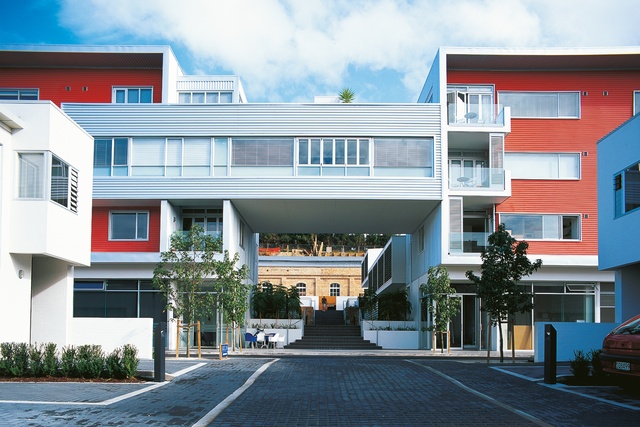
A widely quoted example is Beaumont Quarter, completed in 2006, adjacent to Auckland’s Victoria Park, where an old gasworks has been transformed into an innovative housing project and regenerative urban community. The completed scheme is mixed-use and includes approximately 250 houses and apartments, studio workspaces and work-from-home spaces, amenities and facilities. A diverse selection of housing typologies drove the design process and has created a varied, vibrant fabric for the quarter.
Urban design has become a focus of its own and has been an enabler for the creation of a whole group dedicated to this area and to landscape architecture. This group has worked from the little – a parliamentary play space – to the large – urban design work addressing the environmental and social challenges of Tāmaki, for instance. The Tāmaki work develops a clear road map for significantly improved outcomes in planning for urban regeneration in Aotearoa New Zealand, and these are currently being delivered through neighbourhood planning and super-lot developments.
Sustainability has often been at centre stage. In the middle years, the Meridian Building in Wellington became, in 2007, New Zealand’s first 5 Green Star office building. Each façade’s treatment relates to its orientation. There are two forms melded together: one a richly textured anchor and the other a rectangular pavilion. The building comes from an era in which demand for Green Star buildings had started to take off. Fifteen years later, regulation of carbon content and energy consumption will lead to a new transformation.
For Studio Pacific, interest in sustainability has been long-standing, with a dedicated group investigating ways in which we should build. The beginnings, in part, come from the early 1990s when we and Victoria University of Wellington’s John Storey wrote an initial version of Life Cycle Analyses (LCAs) for most building components for Te Kāhui Whaihanga New Zealand Institute of Architects. Later, it has led to work such as Aorangi House, an office building refurb that’s an energy miser, the low-carbon Nelson Airport, the structural efficiency of 20 Customhouse Quay, the 5-star Wellington Convention and Exhibition Centre, Tākina, and the 30 Madden Street apartments in Auckland, which have a Homestar 7 rating.
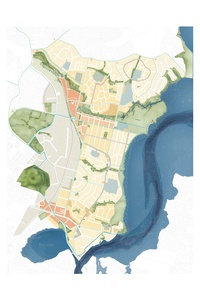
A long-standing interest in low-carbon timber technology began with Aratoi, the Wairarapa Museum of Art and History in Masterton. It has the fundamental idea of three timber-clad vessels set around circulation spines and an ātea. The project benefited from a very generous gift made by Juken New Zealand’s CEO of the time to supply plywood and LVL (laminated veneer lumber – an engineered structural timber) free of charge for the entire building. This remarkable offer came late – part way through completion of the working drawings – but was embraced on both economic and sustainability grounds.
We learnt a little; timber doesn’t work quite the same way as do steel and concrete, and it’s better to make a conscious design decision at the outset about its use. It’s also an obvious truism that architecture and structure are intertwined where they are working their hardest together and timber doesn’t have the same sets of manuals, so it’s worth being close with the structural engineers and the fabricators to realise its full potential.
The interest in engineered timber led to the MOTAT (Museum of Transport and Technology) Aviation Hall in Auckland, with its 42-metre clear-span in LVL to accommodate the museum’s aircraft collection. The building has a crane-action LVL portal frame and a gallery to augment its use of natural ventilation. It started out life in 2003 with an early version of LCA by Scion scientists to analyse the carbon-sink potential of the building. Nelson Airport’s terminal follows that tradition; the client’s briefing included a net-zero energy terminal on the Galapagos Islands as a possible precedent so energy use was assailed in the same way as was carbon content.
The use of engineered timber blossomed in our third decade with, now, multiple buildings of all types and several office buildings, including Wellington’s 149 Featherston Street, embracing its use. Our largest is the 98-metre-span Hangar 4 for Air New Zealand; its LVL/CLT truss arrangement was conceived in the studio one evening by some of our country’s best engineers.
Our architecture often feels permanent, at least for a time. In looking back, one of my personal favourites as a source of inspiration has been the constructivists with their heady radical futurism and embrace of dynamic form. Now, unfortunately, we read that Ukrainian examples of that heritage have been lost to one dictator’s missiles.1
It is the people that matter more than the buildings, but the buildings are of the people and we are both connected and disconnected from what is an unjustifiable sadness in Ukraine. It is not as though such troubles have never been seen here; 19th-century colonialism was also devastating and the effects remain.
It is the people that matter more than the buildings, but the buildings are of the people and we are both connected and disconnected from what is unjustifiable sadness in Ukraine. It is not as though such troubles have never been seen here; 19th-century colonialism was also devastating and the effects remain.
Part of the rebuilding in recent times has been the use of co-design with manawhenua; this is an area where we as a profession, and ourselves as a practice, can find a powerful array of beauty, hope and joy along with a measure of redress in developing the work we do. Some of this mahi, for instance in Heke Puna – the National Library with Tihei, our iwi-appointed co-designer – will be an outstanding reflection of our partners and their people’s needs and aspirations, connecting Te Tiriti with us all and its central place in our joint history. For us, this started with the placement of Te Tiriti in He Tohu, the place we have created for Aotearoa’s founding documents. Ultimately, co-design is a promise being made to be partners in the true sense of a partnership and it seeks to restore what should have been.
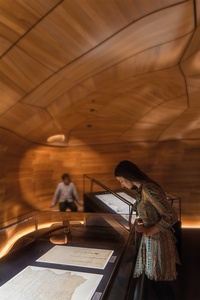
We have lighted on a few drivers for the practice in the fourth and coming decades – three of the most fundamental are the embrace of Te Ao Māori, the need to keep our people-centric ethos at centre stage and the mitigation of climate change with sustainable design. It is impossible to predict the next decade, let alone the next 30 years, but they will not be very comfortable if we do not address the planetary woes with which we are confronted.
One thing that shouldn’t change is enjoying being at work. A reader of an early draft reminded me that I hadn’t mentioned some of the institutions that make a difference to the day; they are things we probably take for granted but shouldn’t. We have had morning tea almost every day for 30 years – I am always astounded to find that’s not universal. The culture of the studio with its teas, intermittent shared lunches, Friday night events and other activities is not composed of just the work; these institutions provide places in which to connect with a great range of great people, too many to summarise without leaving someone out. They have made the real difference in what we enjoy and what we can do.
We have not arrived at this fourth decade without evolving how we work together. There is a new way of governance but, still, a large group of long-standing key staff members who have built the practice with us, and whose past and future contributions will cement how we confront climate change and the other issues that will perplex us as architects. We have had some very close relationships with board members, mentors and key consultants, collaborated with a multitude of our artistic and architectural colleagues, and enjoyed working with some very hardworking and dedicated builders and contractors along the way. And, most importantly, we have had a range of very loyal clients, as evidenced by the level of repeated project relationships.
In 1992, nothing of where we are now was readily apparent. Where we will be in 30 years is just as impossible to foresee, yet there remains plenty of hope and ambition, and somewhat less naïveté.
Evžen Novák is one of the three founders of Studio Pacific Architecture and is currently the Managing Director. A graduate of the University of Auckland School of Architecture and Planning, Novák worked in Aotearoa New Zealand, Switzerland and the UK before founding Studio Pacific. Sustainable design is one of his longest-standing and deepest professional interests.
1 Owen Hatherley, London Review of Books, 24 March 2022: “It’s on the account run by the artist Nikita Kadan (@nikita. kadan) that I learned the ‘Slovo’ building, a block of flats in Kharkiv, was one of dozens of buildings in Ukraine’s second city to have been shelled by the Russian army over the last fortnight. The Slovo (‘Word’) building, the shape of a Cyrillic ‘S’ – C – is one of many artefacts in Kharkiv attesting to the years, between 1919 and 1934, when the city was the capital of Soviet Ukraine. It became a centre for avant-garde art and design, with Constructivist journals…, [and] for architecture, with extraordinary achievements like the Derzhprom building… In the early 1930s, Ukraine’s modern movement was crushed, and many of the Slovo’s residents were killed by the NKVD. That generation of cultural workers in Kharkiv is widely known as the ‘Executed Renaissance’, the title of an anthology issued in 1959 by the émigré Polish journal Kultura.”

